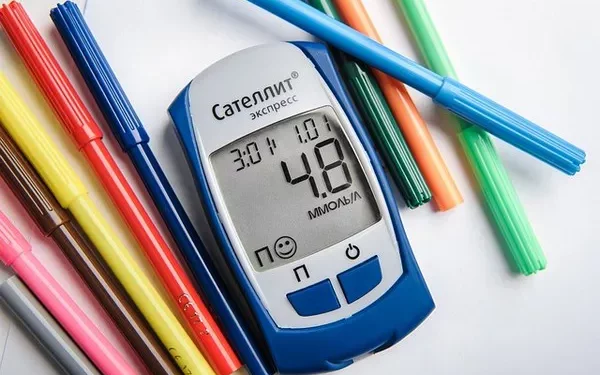Monitoring blood sugar levels is a crucial aspect of diabetes management. Elevated blood glucose levels, if left unchecked, can lead to various complications such as heart disease, kidney damage, nerve problems, and even blindness. The primary tool used to assess blood sugar levels is blood sugar testing, a simple yet vital procedure that helps healthcare providers monitor the effectiveness of diabetes treatment plans and the overall health of individuals with diabetes.
In this article, we will delve into the significance of blood sugar tests, the different types of blood tests for sugar levels, and how these tests contribute to managing diabetes and preventing complications.
Understanding Blood Sugar and Its Importance
Before we discuss the specific blood tests, it is essential to understand what blood sugar is and why its regulation is so vital.
Blood sugar, or blood glucose, is the primary source of energy for the cells in your body. The food we consume is broken down into glucose, which then enters the bloodstream. The body’s ability to regulate blood sugar is a delicate balance, largely controlled by the hormone insulin. Insulin is produced by the pancreas and helps move glucose from the blood into the cells to be used for energy or stored for future use.
When the body cannot properly use or produce insulin, it leads to an imbalance in blood sugar levels, resulting in diabetes. There are two main types of diabetes:
Type 1 Diabetes: This is an autoimmune condition where the immune system attacks the insulin-producing cells of the pancreas, leading to little or no insulin production.
Type 2 Diabetes: In this form, the body becomes resistant to insulin, or the pancreas is unable to produce enough insulin to maintain normal blood sugar levels.
Uncontrolled blood sugar levels, whether too high (hyperglycemia) or too low (hypoglycemia), can cause serious health issues, such as damage to blood vessels, nerves, and organs. Hence, regular blood sugar monitoring is key to preventing complications.
Types of Blood Sugar Tests
There are several different types of blood tests used to measure blood sugar levels. Each test provides valuable information at different times of the day or under different conditions, offering insight into how well blood sugar is being controlled. Let’s explore the most common blood sugar tests:
1. Fasting Blood Sugar Test (FBS)
The Fasting Blood Sugar (FBS) test is one of the most widely used tests to measure blood glucose levels. It is performed after a person has fasted for at least 8 hours (typically overnight). The FBS test provides a snapshot of how the body is managing blood sugar levels without the influence of recent food intake.
Why it’s important: This test helps determine if an individual’s blood sugar is in the normal range, elevated, or indicative of diabetes.
Interpretation of Results:
Normal: 70-99 mg/dL (3.9-5.5 mmol/L)
Pre-diabetes (Impaired Fasting Glucose): 100-125 mg/dL (5.6-6.9 mmol/L)
Diabetes: 126 mg/dL (7.0 mmol/L) or higher
A fasting blood sugar level above 126 mg/dL on two separate occasions may indicate diabetes.
2. Oral Glucose Tolerance Test (OGTT)
The Oral Glucose Tolerance Test (OGTT) is used to assess how the body processes glucose over a set period of time. During the test, the individual fasts overnight, and their blood sugar is measured before drinking a sugary solution that contains 75 grams of glucose. Blood samples are then taken at intervals, usually after 1 hour and 2 hours, to see how the body is handling the influx of glucose.
Why it’s important: The OGTT is commonly used to diagnose gestational diabetes (diabetes during pregnancy) and to confirm the diagnosis of type 2 diabetes when fasting blood sugar levels are borderline or inconsistent.
Interpretation of Results:
Normal: 2-hour blood sugar level less than 140 mg/dL (7.8 mmol/L)
Pre-diabetes (Impaired Glucose Tolerance): 140-199 mg/dL (7.8-11.0 mmol/L)
Diabetes: 200 mg/dL (11.1 mmol/L) or higher
This test is particularly useful in diagnosing gestational diabetes, which can affect the pregnancy and the baby’s health if not properly managed.
3. Hemoglobin A1c Test (HbA1c)
The Hemoglobin A1c (HbA1c) test measures the average blood sugar levels over the past 2 to 3 months. It reflects how well the blood sugar levels have been controlled over an extended period, making it a valuable tool for long-term diabetes management.
Unlike the FBS and OGTT tests, the HbA1c test does not require fasting. The test works by measuring the percentage of hemoglobin (a protein in red blood cells) that is bound to glucose. The higher the blood sugar levels, the more glucose will be attached to hemoglobin.
Why it’s important: This test is crucial in evaluating how well diabetes has been managed and whether adjustments to medication or lifestyle changes are necessary.
Interpretation of Results:
Normal: Less than 5.7%
Pre-diabetes: 5.7% – 6.4%
Diabetes: 6.5% or higher
An HbA1c level of 7% or higher is often the target for people with diabetes, indicating good long-term blood sugar control.
4. Random Blood Sugar Test
The Random Blood Sugar Test measures blood glucose levels at any given time, without regard to when the person last ate. It is often used in emergency settings, especially when symptoms of high or low blood sugar levels are present.
Why it’s important: The random blood sugar test is useful for diagnosing diabetes when symptoms like excessive thirst, frequent urination, and unexplained weight loss are present.
Interpretation of Results:
Normal: 70-140 mg/dL (3.9-7.8 mmol/L)
Diabetes: 200 mg/dL (11.1 mmol/L) or higher
If the result is higher than 200 mg/dL, diabetes is strongly suspected, and further testing is often recommended.
5. Continuous Glucose Monitoring (CGM)
The Continuous Glucose Monitoring (CGM) system provides real-time glucose readings throughout the day and night. A small sensor is placed under the skin, typically on the abdomen or arm, to monitor glucose levels continuously. The data is transmitted to a device, such as a smartphone or a dedicated reader, which provides real-time feedback.
Why it’s important: CGM is particularly useful for individuals with type 1 diabetes or those who require tight control over their blood sugar levels. It helps detect fluctuations in blood glucose and provides valuable data to prevent episodes of hyperglycemia or hypoglycemia.
Interpretation of Results: CGM systems provide detailed reports, showing trends and fluctuations over time. Healthcare providers use this data to fine-tune diabetes management plans, including insulin dosing and lifestyle changes.
The Role of Blood Sugar Tests in Diabetes Management
Blood sugar tests play a central role in diabetes management by offering immediate feedback on how well a person is managing their condition. Regular monitoring enables individuals to:
Adjust Medications: Blood glucose levels directly influence medication doses, including insulin and oral diabetic drugs. Monitoring helps doctors adjust doses based on real-time data.
Prevent Complications: Consistently high blood sugar levels can lead to long-term complications such as heart disease, kidney damage, neuropathy, and vision problems. Blood sugar tests help identify trends that could lead to complications, allowing for early intervention.
Track Lifestyle Impact: Lifestyle factors, including diet and exercise, significantly impact blood sugar levels. Regular testing can show how these factors affect glucose control and help patients make necessary adjustments.
Assess the Effectiveness of Treatment: Blood sugar monitoring provides valuable information on the effectiveness of a treatment plan, whether it includes medication, diet, or physical activity.
When Should You Test Your Blood Sugar?
The frequency of blood sugar testing depends on several factors, including the type of diabetes, the individual’s treatment plan, and how well the blood sugar is controlled. For example:
People with Type 1 Diabetes: Regular blood sugar tests are often required before and after meals, during physical activity, and at bedtime. Continuous glucose monitoring (CGM) systems are also frequently used for more consistent monitoring.
People with Type 2 Diabetes: Blood sugar testing may be needed less frequently, but individuals on insulin or other medications that increase the risk of hypoglycemia may need to check their blood sugar more often.
Gestational Diabetes: Women diagnosed with gestational diabetes typically test their blood sugar several times a day, especially after meals, to ensure optimal control during pregnancy.
Tips for Accurate Blood Sugar Testing
To ensure accurate blood sugar readings, it is important to follow some basic guidelines:
Follow Instructions: Whether using a blood glucose meter or CGM, it’s important to follow the manufacturer’s instructions carefully.
Keep Equipment Clean: Always clean the blood glucose meter and test strips regularly to ensure accurate readings.
Avoid Contaminated Hands: Wash your hands before testing to prevent contamination of the blood sample.
Record Results: Keep track of your test results, especially if you are adjusting your diabetes treatment plan based on the data.
Conclusion
Blood sugar tests are a cornerstone of diabetes management. Whether it’s a fasting blood sugar test, a hemoglobin A1c test, or continuous glucose monitoring, these tests provide valuable insights into how the body is handling glucose. Regular monitoring helps individuals with diabetes make informed decisions about their treatment plans, ultimately leading to better long-term health outcomes. By understanding the various blood sugar tests available and working closely with healthcare providers, people with diabetes can achieve optimal glucose control and reduce the risk of complications.
Related topics:
What Glucose Level is Considered High?



























